USDA rural counties map pg 5 of 6
Do you have any thoughts on this post?
Think the Farm Bill doesn’t affect habitat or clean water where you live? Check out these maps
Recently, we highlighted on the blog how the Farm Bill, which may be most familiar to agriculture-minded folks in the Midwest, helps the greater sage grouse, one of our most iconic and imperiled Western game species. It drew attention to the fact that some people might not be aware that the Farm Bill touches down in all corners of the country.
But if we’re going to get Congress to pass a new Farm Bill that helps to guarantee all Americans quality places to hunt and fish, we’ll need every hunter and angler to engage with their elected officials about the programs that matter in the places where they live and spend time outdoors.
One of our goals at TRCP is to educate sportsmen and women on the key conservation provisions of the 1,000-page, trillion-dollar Farm Bill, so we put together a primer on where Farm Bill conservation touches down. Think your area isn’t affected by Farm Bill conservation, because there isn’t eye-high corn in view? Think again.
Congress must write a new #farmbill that helps guarantee Americans quality places to hunt and fish #crpworks #originalconservationists Share on X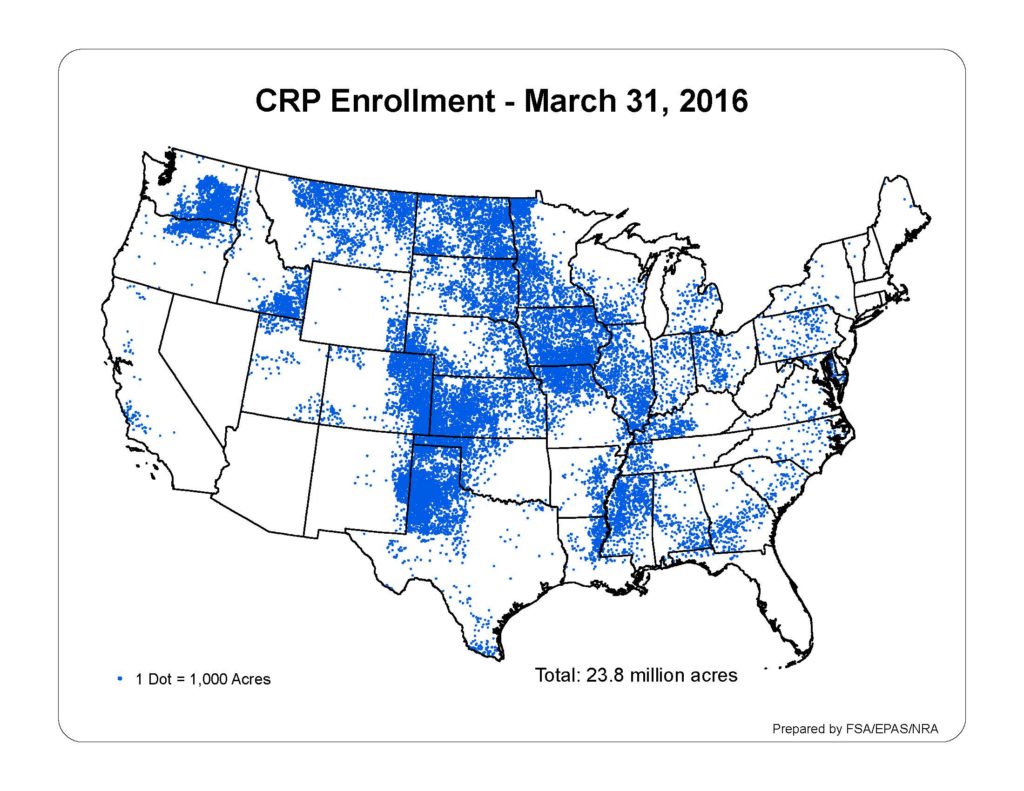
Over the last three decades, it has been proven that the Conservation Reserve Program works for wildlife, water quality, agricultural producers, and sportsmen. You may not be in a major CRP state like Iowa, Kansas, or the Dakotas, but check out whitetail country in Pennsylvania and the major clutch of CRP acres around eastern Washington’s lakes. Your hunting and fishing is benefiting from conservation improvements on private lands wherever you see a dot of blue on this map.
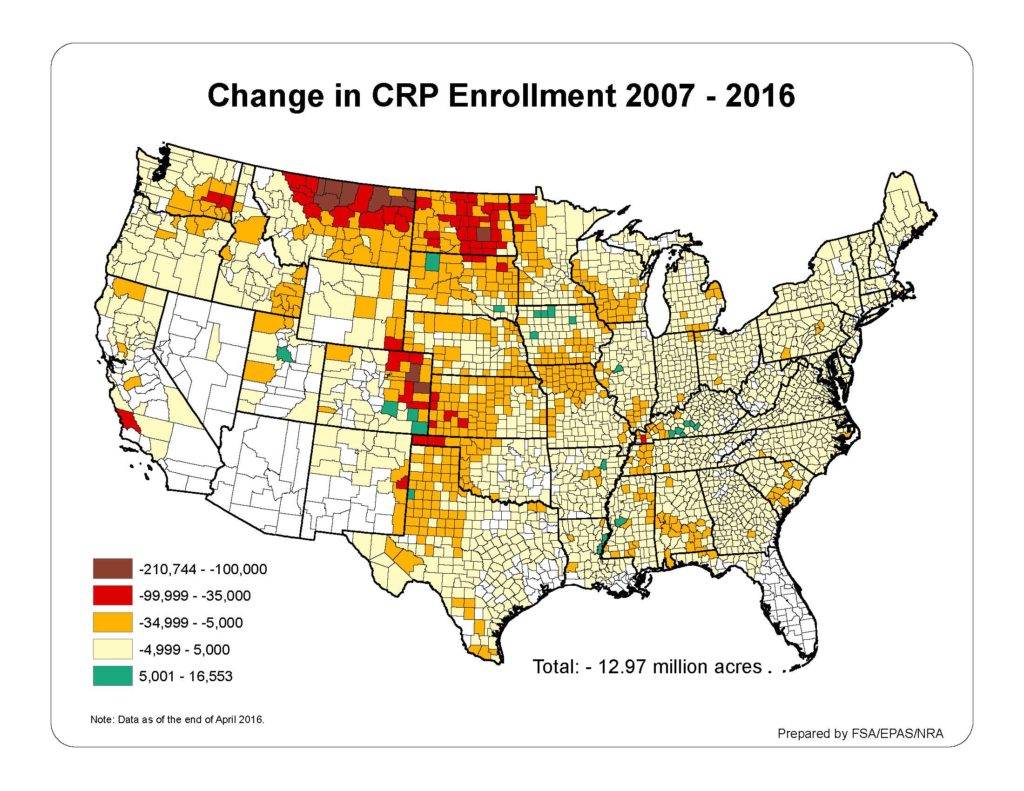
Unfortunately, the current breadth of CRP is far less than we used to have. Is your town on this map, but not the one above? Then you’ve lost CRP’s benefits. Around 2007, crop prices started to rise dramatically, and landowners began to choose crops over habitat—now, nearly 13 million acres of CRP grasslands, wetlands, and forests have disappeared from the landscape, the vast majority of which were lost in hunting strongholds like Montana, North Dakota, and Colorado. If you have a minute, go to our petition at CRPworks.org and tell Congress that you want to see these acres restored to the land.
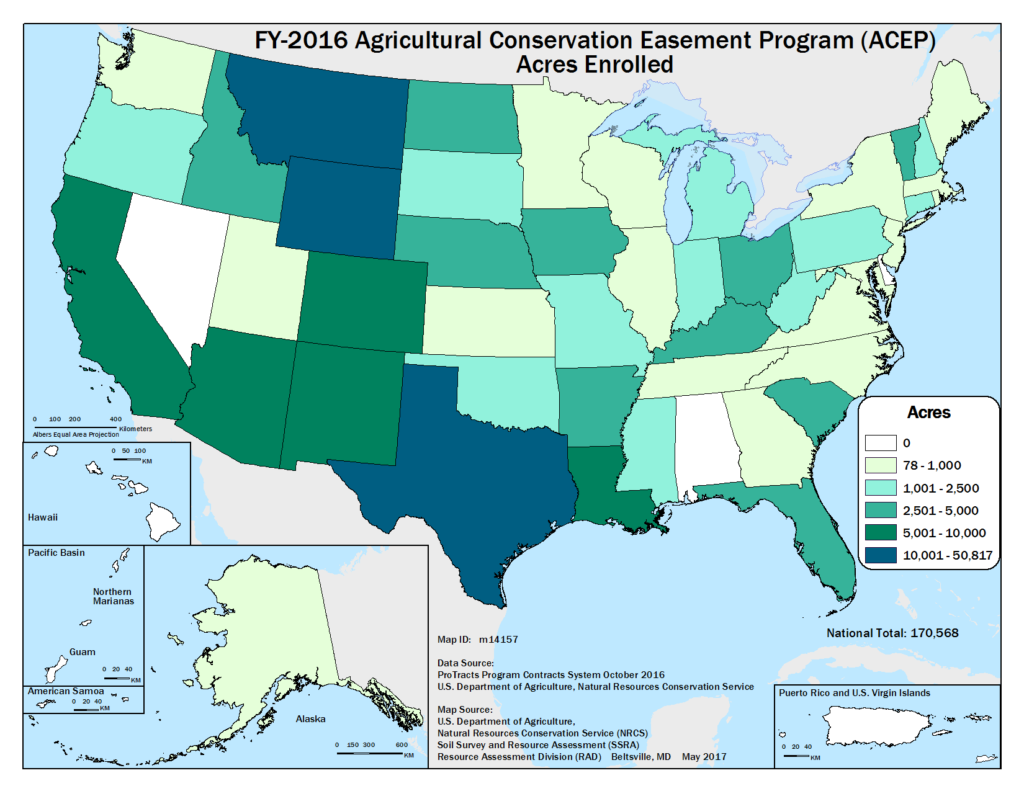
Long-term easement agreements under the Farm Bill’s Agricultural Conservation Easement Program support the voluntary restoration, protection, and enhancement of wetlands and forests, while protecting working agricultural lands from subdivision and development. If your region is on this map, you’re lucky to have easement acres in the mix to benefit critters, water quality, and rural areas. For instance, states like Texas, Wyoming, and Montana are leading the drive for private ranchland protection on an acre-by-acre basis.
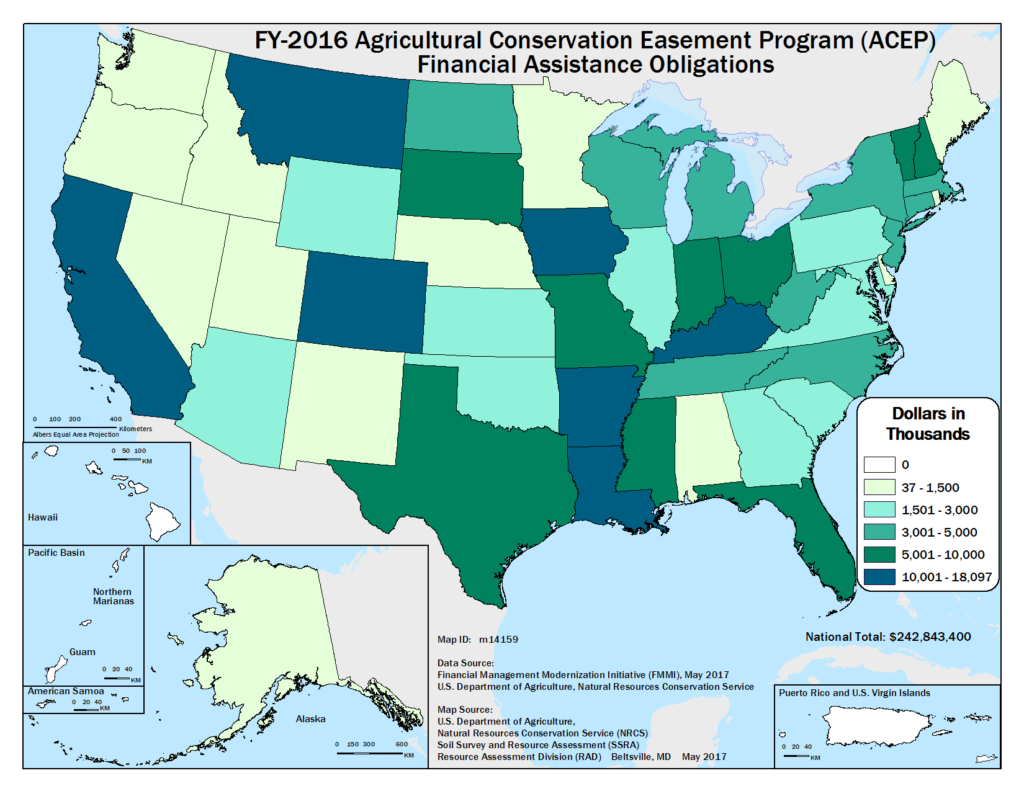
But the states getting the most dollars include Iowa and Louisiana, where farmland and wetlands in expensive, highly-developed areas are in great need of protection. Landowners in those regions need more money to conserve even very small areas, and the Farm Bill is critical to making this happen.
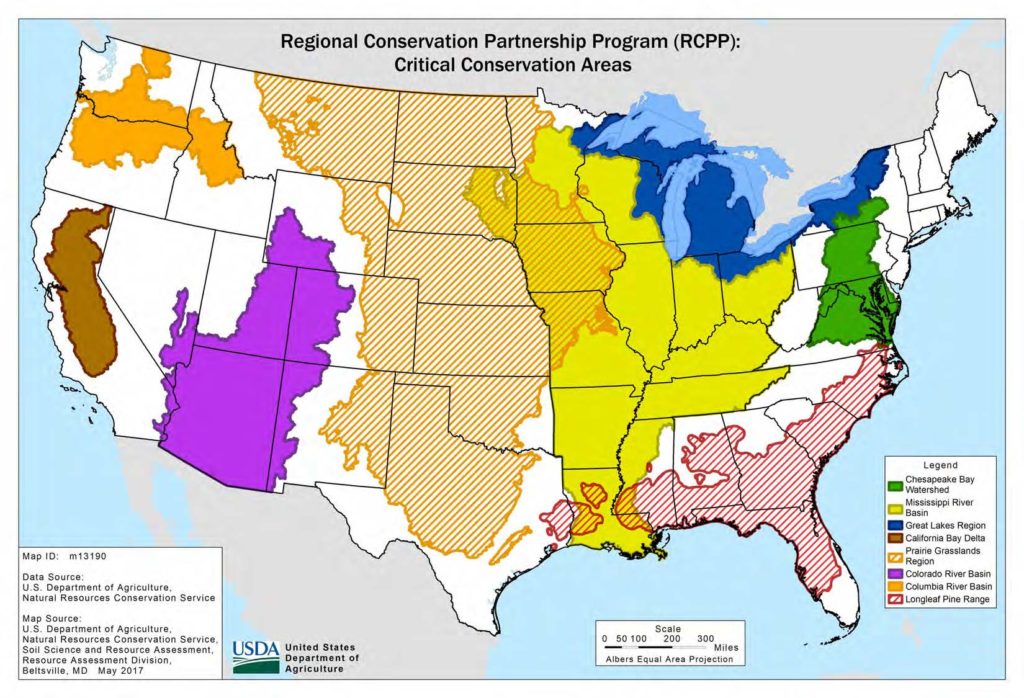
Public-private partnerships that work through the Farm Bill’s Regional Conservation Partnership Program coordinate conservation projects across landscapes, rather than incentivize a thousand random acts of conservation here and there around the country. RCPP was designed in part to focus on eight Critical Conservation Areas, which line up with areas TRCP and our partners care deeply about, including the Chesapeake Bay Watershed, Mississippi River Basin, Prairie Grasslands Region, and Colorado River Basin.
These focus landscapes encompass more of the country than you think—for example, the Chesapeake Bay Watershed stretches far outside of Maryland. (In fact, the health of the Bay’s rockfish fishery partly depends on farms in rural Pennsylvania.) RCPP helps incorporate the farthest reaches of these CCAs into more cohesive conservation plans.
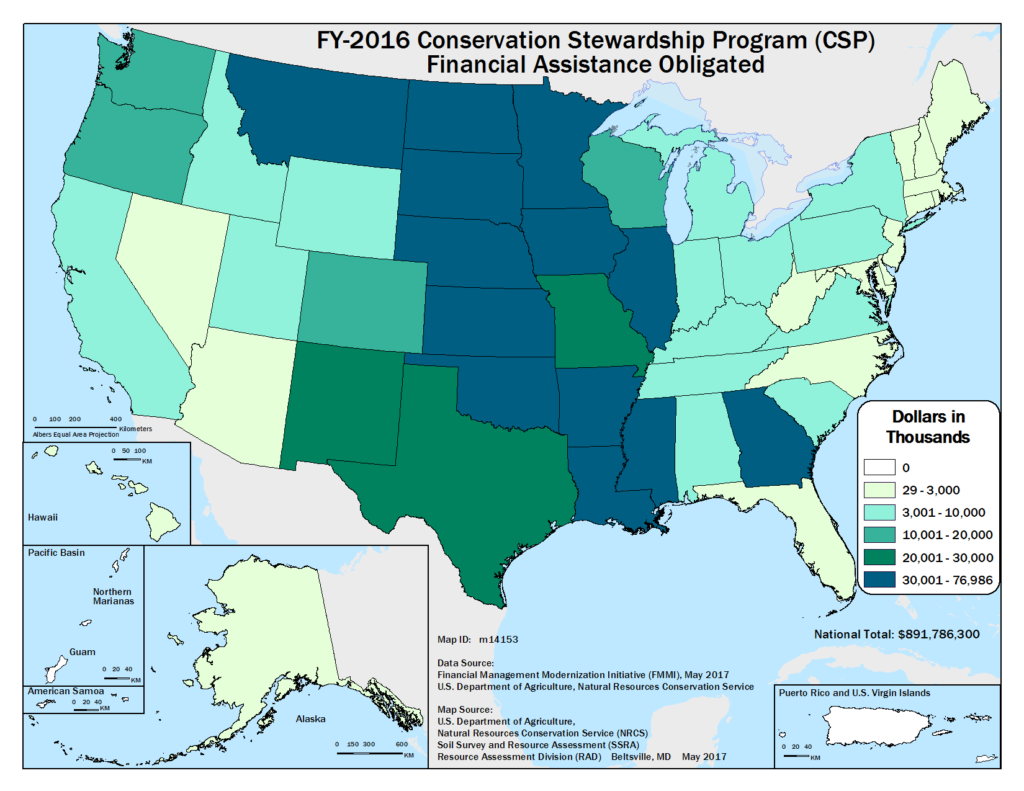
Working lands programs in the Farm Bill, like the Conservation Stewardship Program and Environmental Quality Incentives Program, provide financial assistance to landowners to improve habitat, reduce erosion, and prevent nutrient pollution on lands that are in active crop production, grazing, and forestry. CSP and EQIP were two of the best-funded conservation programs in the 2014 Farm Bill—combined they put more than $2.5 billion in projects on the ground in 2016.
CSP funding is highly targeted to the Midwest and Plains states. In fact, the pheasant capital of the U.S. in South Dakota—also home of the World’s Only Corn Palace—comes out on top at $93 million.
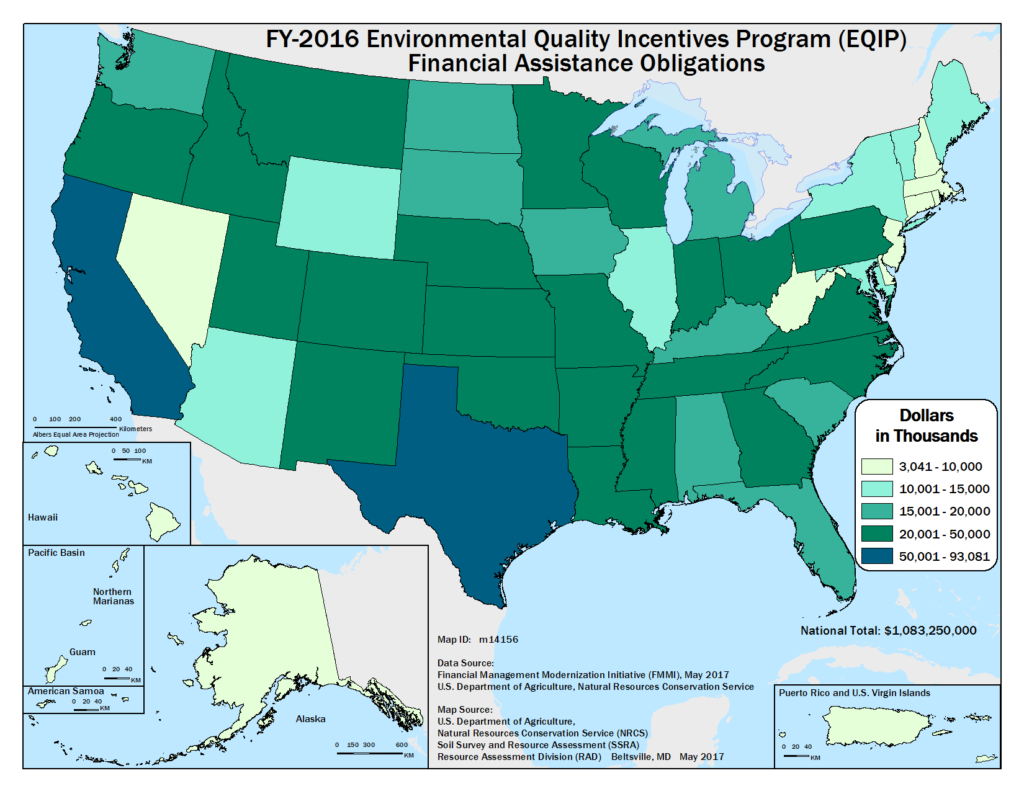
But EQIP dollars have a much more balanced distribution across the country. California and Texas take the prize for top dollar thanks to sheer size, but other sportsmen-friendly states like New Mexico and Arkansas also rank very high for number of contracts and acres. If your state is in deep green on the map, it’s a good bet that agricultural producers are working to make your waterways just as vibrant as their farms.
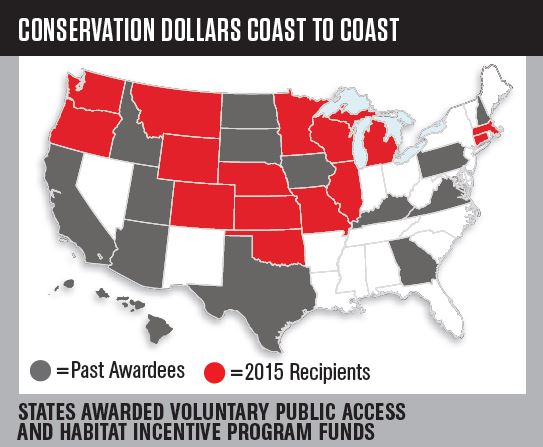
Through 2015 (the last time USDA offered up these program funds) 29 states have received grants through the Farm Bill’s Voluntary Public Access and Habitat Incentive Program to open private lands for public recreation. States like Minnesota, Kansas, Pennsylvania, and even Connecticut use VPA funds to support walk-in access in a number of ways: by paying landowners to open their lands (many open their CRP habitat to hunters), posting signs on the property and publishing the location of access points in brochures and online, improving habitat, repairing roads and fences, patrolling access points for poachers and other bad actors, and even covering the costs of liability insurance for landowners, in case a sportsman gets hurt on their property. East of the Mississippi, where some states are 99 percent privately owned, this is an essential way to ensure quality days afield.
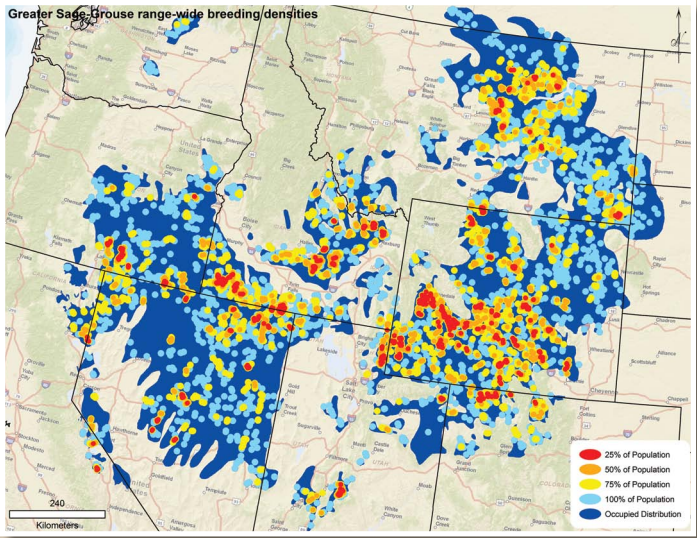
Let’s talk about Nevada for a second. You may have noticed that Nevada comes up blank or nearly blank on many of these maps. And no wonder—when we talk about Farm Bill we’re talking about the conservation of private lands. About 85 percent of Nevada is comprised of public land. This doesn’t mean there’s zero opportunity for Nevadans to benefit from the Farm Bill. In fact, with a big chunk of sage grouse core habitat in the northeast of the state, ranchers can make a real difference by marking livestock fences or participating in habitat improvements through the Sage Grouse Initiative.
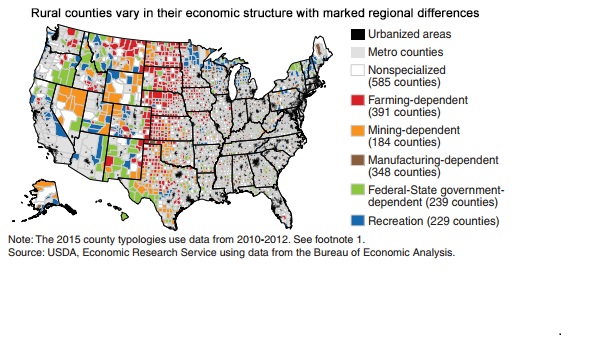
According to the USDA, 229 counties (in blue on this map)—ranging from Lake and Peninsula Borough, Alaska, to Monroe County, Florida—are economically dependent on recreation. That’s no surprise to sportsmen and women who have seen firsthand how hotels, gas stations, bars, and diners in rural and coastal areas empty out when the season’s over. This map shows a country where hunting and fishing support more jobs than the oil and gas industry. And the Farm Bill contributes to the complex conservation picture that supports this important $887-billion outdoor recreation economy.
We already know that hunters and anglers, regardless of political party, support conservation funding: 75 percent agree we should provide financial incentives to farmers and ranchers to implement habitat conservation on private lands, and 87 percent do not want to see cuts to conservation programs, in the Farm Bill or anywhere else.
These maps further show that support for Farm Bill conservation shouldn’t break along party lines or state lines. If you agree, follow us on social media as we enter the 2018 Farm Bill debate—because if Congress crosses the line and tries to cut these programs, we’re going to need your help.
Modern federal fisheries management should recognize the value of recreational fishing to local communities and conservation in America—here are three ways to do that
Frustration among anglers is at an all-time high. Overall, recreational and commercial fishing are still being treated the same, despite being fundamentally different activities that require different management approaches. Federal fisheries managers are also employing inherently imprecise data on recreational harvest in a system that requires great precision. Combined, you have a situation where it’s common for anglers to lose access and lack trust in federal fisheries managers.
But there are policy solutions, and the sportfishing, advocacy, and conservation communities continue to work with federal and state policymakers to improve saltwater recreational fishing management and ensure there are healthy stocks of forage fish and gamefish in America’s coastal waters. Here’s what we want to see.
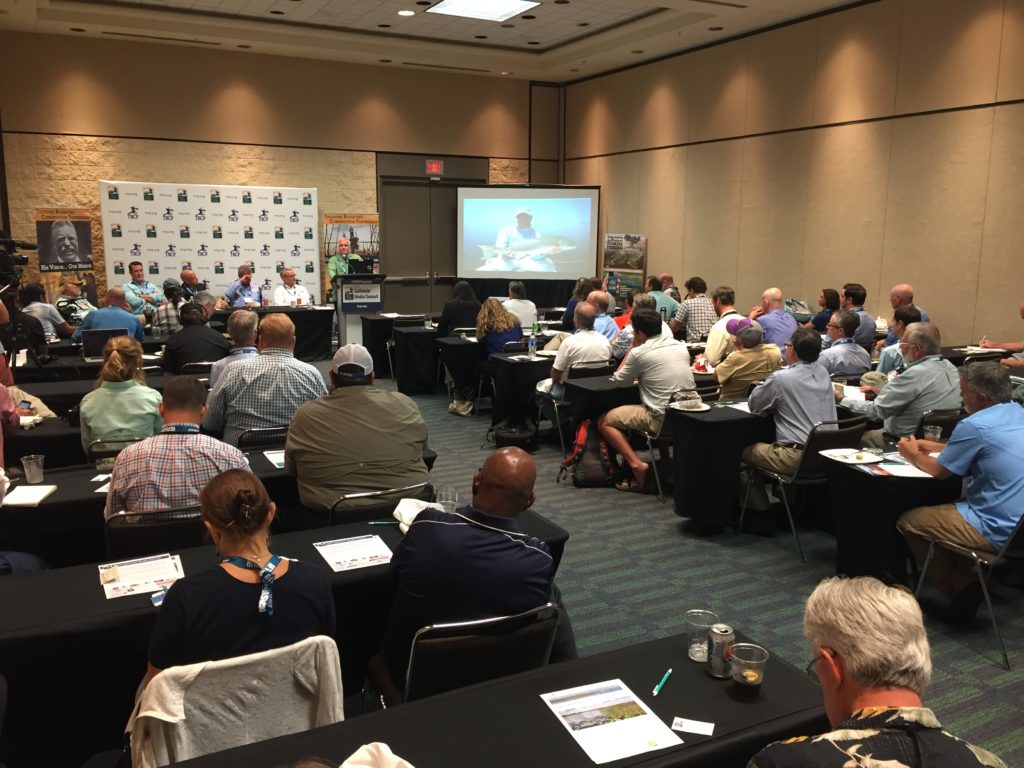
Currently, federal fisheries managers set catch limits for recreational and commercial fishing using quotas to harvest stocks up to maximum sustainable yield. While this may be an ideal management strategy for commercial fishing, where harvesting the maximum biomass is desired, it is not an effective management tool for recreational fishing, where abundance, size, and opportunity are more important. We get out on the water to catch fish for food or catch and release fish as a way to enjoy the outdoors—our motivations and tactics are different than the commercial sector.
In the past year, the recreational fishing community has explored the technical aspects of incorporating more management techniques appropriate for recreational fisheries into federal approaches, and our groups worked with decision makers to develop pieces of legislation to implement these ideas. “The Modernizing Recreational Fisheries Management Act of 2017” was introduced in the House of Representatives in April and in the Senate this week.
The bill requires an examination of allocations in mixed-use fisheries, allows for the use of alternative management approaches for recreational fishing, and requires federal managers to work more closely with state fisheries agencies and research facilities to incorporate data on fish stocks and improve angler data collection on harvest and effort.
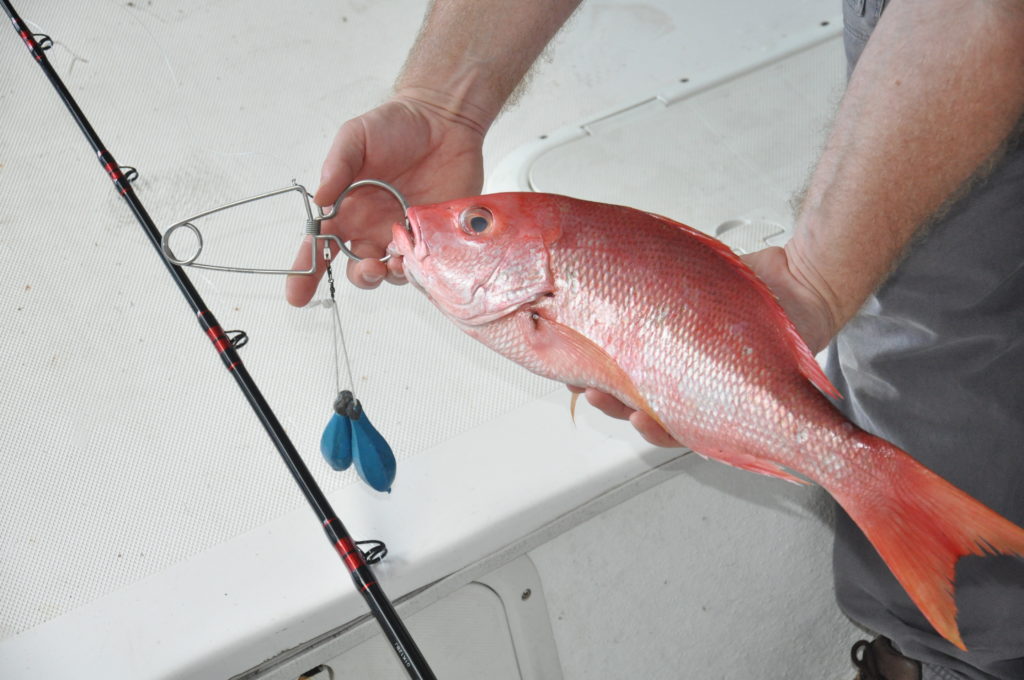
In May, state fisheries management agencies joined Gulf-region elected officials and the Department of Commerce to address the historically embattled red snapper season for federal waters, set for just three days in 2017. Gulf-state fisheries agencies traded red snapper fishing days in state waters for a 39-day red snapper season on weekends through Labor Day 2017. A high level of cooperation and coordination was needed to have all five states agree to this deal with the federal government, and the extended season has calmed anger and frustration among Gulf anglers.
However, it is a temporary fix. A long-term solution will require more cooperation, improved data collection, and continued efforts from Congress to address federal laws that manage recreational fishing based on the values of commercial fishing.
Forage fish like menhaden serve as the foundation of the food chain, supporting sportfish such as striped bass, bluefish, red drum, speckled trout, and other species enjoyed by recreational anglers. Improving forage fish management and the conservation of these stocks is critical to the health of these economically important game fish.
Currently, the Atlantic menhaden fishery is managed as a single species, but this approach fails to account for the little fish’s critical role as an essential food source. In November 2017, the Atlantic States Marine Fisheries Commission will vote on whether to transition menhaden to an ecosystem-based model, which would account for predator-prey relationships and bring forage fisheries management into the 21st century. The TRCP, ASA, and CCA are working with sportsmen and conservation groups to support this landmark decision, and sportsmen and women will have a chance to weigh in this fall.
Want to be the first to know about your opportunity to take action? Sign up for the Roosevelt Report.
Cover photo and above courtesy of Florida Fish and Wildlife Conservation Commission.
The consolidation of public lands in Montana’s Blackfoot Valley has led to a golden opportunity for restoration and conservation
Western Montana’s Blackfoot Valley lies along the southern edge of the Crown of the Continent, a vast complex of land comprised primarily of the Bob Marshall and Scapegoat wilderness areas and Glacier National Park. A popular destination for hunting and fishing, the outdoor appeal of the Blackfoot Valley is a critical component to the local economy. Healthy populations of deer and elk inhabit the valley year round, and the Blackfoot River flowing down the middle of the valley supports critical populations of Westslope cutthroat and bull trout. This area also provides important habitat linkage from the Crown of the Continent ecosystem to the Garnet Mountain Range, which runs along the southern edge of the valley.
Today, the BLM’s Missoula Field Office is responsible for the management of 156,000 surface acres in the Blackfoot Valley and the adjacent Garnet Range. The Missoula BLM is currently in the process of updating their Resource Management Plan: a document that will provide goals, objectives, and direction for the management of these lands for the next 20 to 30 years. But before we look at recommendations for the future, it’s important to understand how we got to where we are today.
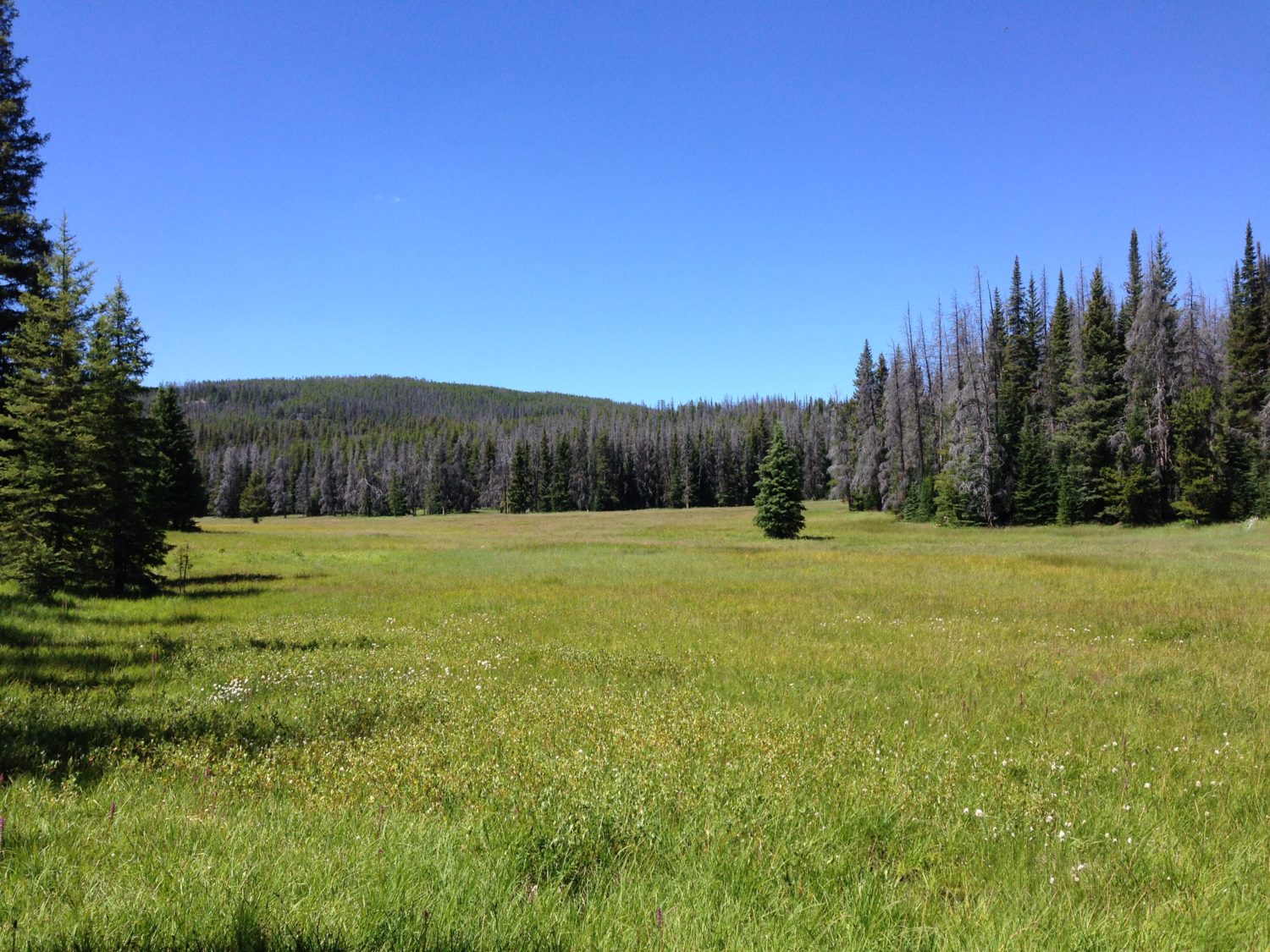
The area has an interesting past and a long history of conservation efforts. As early as the 1860s, many of these lands were owned by the Great Northern and Northern Pacific railroads. A hundred years later, these lands belonged to corporate timber companies. As a result, vast acreages resembled a checkerboard pattern of public and private land. This fragmented layout made land management more costly and made access challenging.
Starting in the late 1970s, public and private landowners and stakeholders in the valley came together to guide conservation decisions on the future of this extraordinary place. Since that time, hundreds of millions of conservation dollars, from both public and private sources, have been poured into the valley to restore sensible ownership patterns and shore up large tracts of vital wildlife habitat.
The results point to one of the most effective community-based conservation efforts in the country—anchored by the 40,000-acre Blackfoot Clearwater Game Range, one of the oldest state-owned game ranges in Montana. The first conservation easement ever placed on private land in Montana occurred in this valley, and now more than 100,000 acres of private lands are in permanent protection for the benefit of fish and wildlife.
Another example of the Blackfoot’s conservation efforts can be seen in the areas around Marcum and Chamberlain mountains. Much of these lands were corporate timber land, but as these logging companies moved out of the area, these parcels were offered for sale. Local and national conservation organizations acquired these lands, eventually transferring ownership to the BLM, guaranteeing long-term, conservation-minded, multiple-use management.
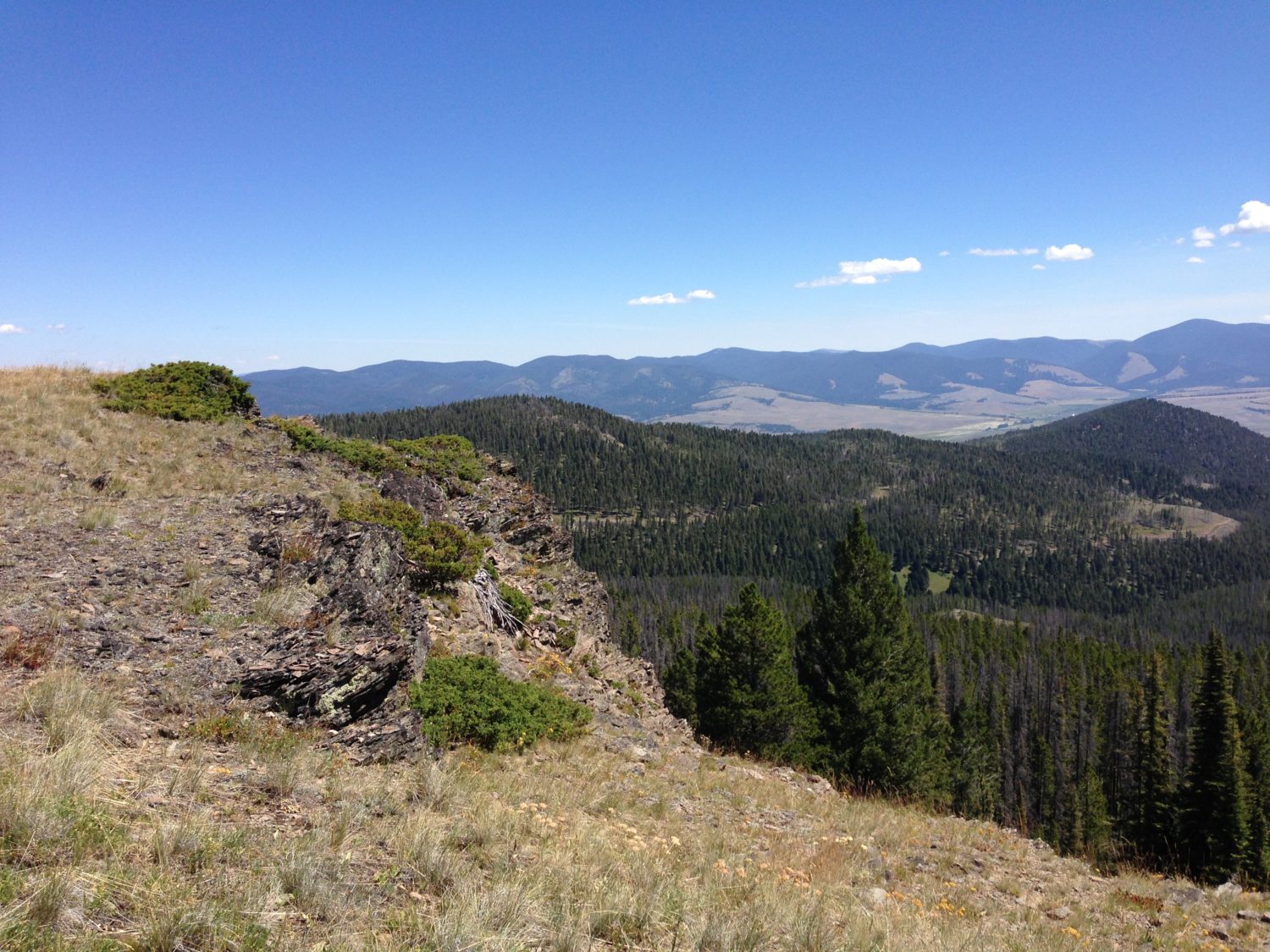
To build on the last 40 years of conservation achievements wrought by sportsmen and women, federal and state agencies, and private landowners, we need to continue to sustain traditional uses of the land, but do so in a way that conserves this important fish and wildlife habitat from the impacts of surface disturbance and development. We need to maintain public access, but in a way that balances road access and habitat needs. And we need to focus land management on the conservation, restoration, and enhancement of key habitats that also support our economy. These lands provide unique opportunities for hunting, fishing, hiking, and other healthy and enjoyable outdoor activities. It is important that these lands are restored and kept intact.
To achieve all of these goals and still allow traditional uses, such as timber management and livestock grazing, to continue, sportsmen are asking the BLM to consider backcountry conservation management for certain areas as the agency revisits its Resource Management Plan. This land management tool exists to help conserve, restore, and enhance large areas of generally intact and undeveloped BLM-managed lands that foster recreationally important fish and wildlife species.
The aforementioned Marcum and Chamberlain mountains fit this bill perfectly. According to the BLM, more than half of the hunter-harvested whitetail deer in the entire district come from these two hunting areas. Also being recommended for backcountry conservation management are portions of the Hoodoo and Ram Mountains, home to healthy populations of Rocky Mountain bighorn sheep and cutthroat trout—two of Montana’s most sought-after game species. Collectively, these four areas offer important big game habitat and are heavily utilized by sportsmen during hunting season.
With your help, we’ve let the BLM know that by managing these areas for backcountry conservation management, the agency would be ensuring that this sort of sustained use continues well into the future. Of all the letters submitted during the 60-day comment period, 63 percent were from TRCP members in favor of backcountry conservation management.
Encouraging backcountry conservation, Montana TRCP members sent the BLM 63% of all comments. Here's why Share on XBLM-managed lands in the Blackfoot Valley are a significant part of one of the most successful landscape-level conservation efforts in the county. As the BLM spends the next few months drafting their planning proposals for the area, we ask that you stay tuned for opportunities to weigh in by becoming a member of TRCP today (it’s free).
In the future, we’ll keep you posted on this and any other issues that affect your hunting and fishing heritage, specifically regarding places that are too valuable to risk, like Montana’s Blackfoot Valley and the surrounding Marcum, Chamberlain, Hoodoo, and Ram mountains.
One of our staffers says goodbye and reflects on what our work to enhance habitat and access for American sportsmen and women has taught her
Last spring, I drafted a cover letter that would ultimately land me my job at the TRCP. At the time, I hadn’t hunted or fished much, but I explained that my experience with wildlife science and policy had granted me respect for the mission and work of the organization. I wrote that I believed “pragmatic conservation approaches depend on hunters and anglers.”
In the little more than a year since, I’ve been proven right. Amid challenges that come with the close of a congressional session and start of a new administration—not to mention blatant bills and incremental changes threatening to undermine our public lands, fish and wildlife habitat, and sporting traditions—sportsmen have had, and will continue to have, a unique seat at the table in Washington. We have the opportunity to moderate change in a way that creates balance and benefit for America’s fish and wildlife.
And that’s not all that I’ve learned in my time here.

Once, not long after I started at TRCP, I walked into the office kitchen to find Steve Kline, our government relations director, intensely focused on organizing the coffee pod rack. He told me, only half-jokingly, “This is the most visible work product I get to see all day.”
I think about that moment often. No matter how many meetings we have, conservation doesn’t really have an end point. We may never be able to declare a definitive victory. And when we do engage in discrete battles, success can be hard to see, especially in the federal policy sphere where the TRCP operates (and where Steve often leads the charge.) Sometimes it’s clear, and we either gain ground or lose ground. But often, winning just means we held the line.
Last fall, we shared a list of the top four things lawmakers could do for conservation by the end of 2016, with the second item being “let sage grouse conservation plans work.” That’s it, just don’t mess up what we’ve already got. Yet decision makers continue resurrecting attempts to dismantle conservation plans. Whether it’s a dangerous rider on a defense bill or a secretarial order that threatens to shift focus away from habitat, each time a risk emerges, we round up the troops to defend the good policies already in place. And at times we’re able to celebrate an invisible win: the fact that nothing changed at all.
Conservation should never be red or blue—and as far as sportsmen are concerned, it’s not. Hunters and anglers agree that clean water, sportsmen’s access, wetlands protections, wildlife-friendly infrastructure, and federal funding for conservation should be supported and prioritized by lawmakers on both sides of the aisle.
But in the wider political climate, these issues can become partisan, as we saw last year in a House Natural Resources Committee vote on a bill to sell public lands for the primary purpose of timber production. The vote came down almost entirely on party lines, except for a ‘nay’ vote from then-Congressman Ryan Zinke.
That’s why sportsmen’s voices are especially important. We understand that taking good care of our natural resources is an American ideal regardless of one’s political affiliation, and that helps bridge hard political divides and ultimately gets good, bipartisan conservation policy done, like the recent sportsmen’s package. The key is that we have to keep reminding lawmakers that we’re here, we’re paying attention, and these issues are important to us.
Sportsmen can moderate change in a way that creates balance and benefit for America's fish and wildlife. Share on XEarlier this year, when Rep. Jason Chaffetz introduced H.R. 621 to dispose of federal public lands, opposition went viral largely because we didn’t have to explain what the bill meant. The intent was explicit right there in the title. And while the volume of grassroots backlash has largely quelled overt attempts at wholesale transfer or disposal, bad public lands bills aren’t gone for good. They’re just dressed a little differently.
If you ask me, the most important work we do isn’t as flashy as combatting the H.R. 621s of federal policy. More often, we strive to turn your attention to the wonky, technical issues that might slip by you if following them isn’t your full-time job.
Take the Farm Bill, for example. At nearly $5 billion in funding for habitat, technical assistance, and sportsmen’s access, it’s the largest driver of conservation on private land, which makes up 70 percent of the country. There’s a lot to keep track of, but along with our partners we make it our mission to follow what’s going on with the many farm-bill conservation programs (CRP, RCPP, VPA-HIP, EQIP, and more) that you may have never heard of.
Because at the end of the day that big bowl of alphabet soup can make or break your opportunities to hunt and fish.
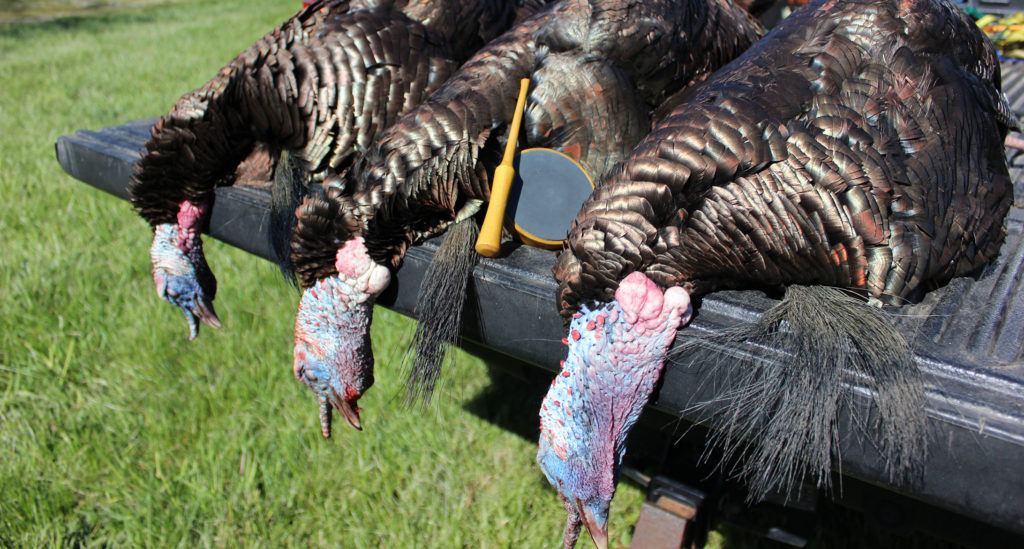
I wasn’t raised among sportsmen, and most of my friends and family see hunters as the antithesis of conservationists. In their minds, it doesn’t make sense that people who kill cute woodland creatures also want to protect them.
When I joined the TRCP team and began considering myself a part of the sportsmen tribe, I fielded this reaction over and over again. And, yeah, it was pretty irritating. I tried to explain how hunters and anglers have a very tangible reason for wanting to sustain critter populations, and how they’re willing to invest their hard-earned money to do so. But despite having the words to explain, I could tell my friends weren’t getting it.
Gradually though, that started to change. When I shot my first turkey and my friends asked me what it was like, I didn’t shy away from explaining the part where I killed an animal, even though I knew it made them uncomfortable. But I also told them about hours spent sitting serenely in silence, the experience of getting out before dawn, and the satisfaction of eating what I’d harvested.
A good friend of mine was genuinely angry when I started working at TRCP, thinking I was somehow betraying conservation ethics. But now, a year later, she’s supportive of my entry into hunting and even asked me to take her clay shooting. She may never kill game herself, but she surprised me in her ability to open her mind to a different perspective.
Hearts and minds can be changed, if only we speak to them with honesty and integrity. And when it seems like there’s bad conservation policy everywhere we turn, that gives me hope for the future of America’s outdoor heritage.
TRCP has partnered with Afuera Coffee Co. to further our commitment to conservation. $4 from each bag is donated to the TRCP, to help continue our efforts of safeguarding critical habitats, productive hunting grounds, and favorite fishing holes for future generations.
Learn More
Sign up below to help us guarantee all Americans quality places to hunt and fish. Become a TRCP member today.

For every $1 million invested in conservation efforts 17.4 jobs are created. As Congress drafts infrastructure legislation, let's urge lawmakers to put Americans back to work by building more resilient communities, restoring habitat, and sustainably managing our water resources.
Sign up to read our economic report on the jobs created by investing in conservation.